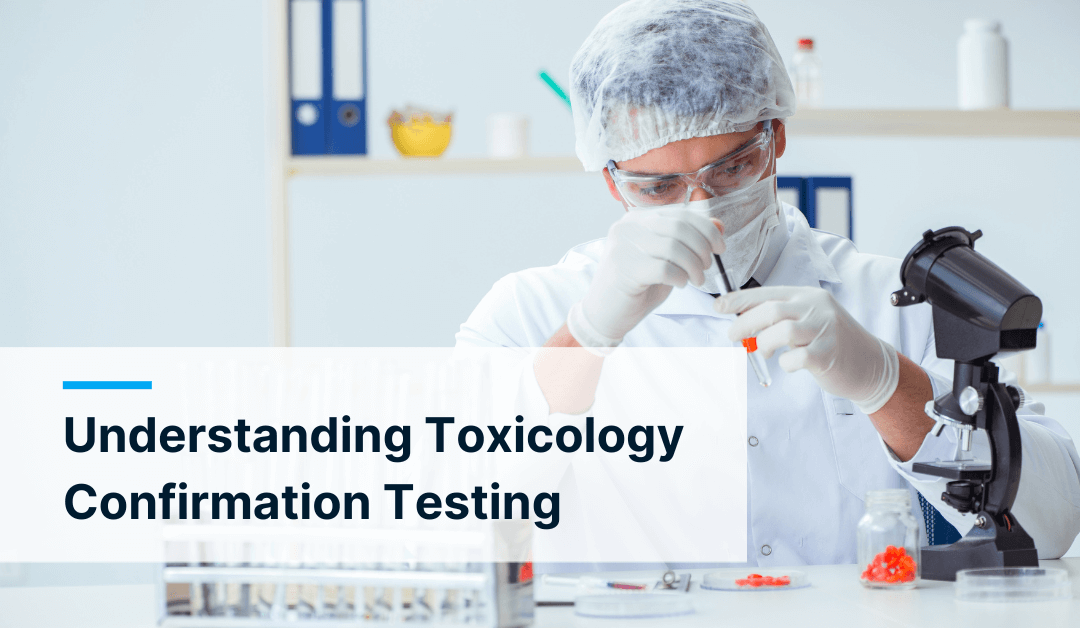Before adding toxicology testing to your practice or lab to help serve the needs of your local community, it’s important to understand how a standard drug screening process plays out. From initial screening through confirmatory testing, below is a high-level breakdown of the steps a lab may take when working to confirm a positive sample.
Initial drug screening
Typically, specimen collection for standard oral or urine drug test is performed on-site when requested by an employer. It may also be done at a laboratory where the laboratory technicians or medical staff read the results. Additionally, there are some urine drug test products available for home testing or instant reading of the results on-site.
These rapid drug tests are also known as instant tests because results are provided immediately on-site. With the rapid drug test, the results are negative or positive. Rapid drug tests are lateral flow tests based on the immunoassay method that describes the interaction between the target and its corresponding antibody. In most cases, the results from rapid drug tests are being read by an officer or a safety manager at the point of collection.
Alternatively, when a sample (i.e. oral fluid, urine) is sent to the laboratory, it undergoes an initial screening process to make a distinction between positive and negative samples. It’s the lab’s job to then ensure the results provided are accurate and reliable. If the initial screening reveals the presence of a drug or a metabolite, the sample is examined in more detail to identify the drug and its concentration through a process known as confirmation testing.
At this stage, a positive result for any of the tested drugs is considered presumptive as it only indicates the possible presence of the drug or metabolites in the specimen but does not quantify the concentration of drugs.
- RELATED:
When is a confirmatory drug test required?
A confirmatory drug test, or confirmation test, is a second test conducted after drugs have been detected during an initial drug screening test. This follow-up test is performed on a different sample, or aliquot, taken from the same specimen and is used to determine the type and quantity of drug or drug metabolite present in the sample. A confirmation test may sometimes also be referred to as a directed analysis.
Utilizing this two-test authentication of positive results is intended to reduce false positives and provide greater confidence in results.
As an industry standard, a confirmatory drug test is done with a different scientific method to nearly eliminate the chance of a false positive test. Confirmation tests are conducted via either gas chromatography- mass spectrometry (GC-MS) or liquid chromatography- mass spectrometry (LC-MS) depending on the specimen type being tested.
Keep in mind that clinical consideration and professional judgment should be applied to any test result, particularly when preliminary positive results are indicated. There is a possibility that technical or procedural errors, as well as other substances and factors, may interfere with the test and cause false results.
Adding toxicology testing or expanding your lab’s menu
Do you not currently offer drug screening, but are exploring the possibility of starting a toxicology laboratory to serve the needs of your local area?
Lighthouse also builds CLIA-certified labs for existing practices and local communities. Our team provides true end-to-end laboratory setup with an average launch time of 35 days! Whether you’re looking to build a lab from the ground up, add new lines of testing for emerging street drugs, or simply add testing capacity, we’re here to help!
Contact us today for a free consultation to get started.

Thank you for posting information about toxicology confirmation testing, very helpful.
What does a U result mean?
Unfortunately, we can’t interpret test results online. You should speak with your primary care provider for that information.
If on initial testing for cocaine at 150ng comes back at 135ng after confirmatory testing will the test be reported positive
We unfortunately can’t interpret test results here. You should contact your healthcare provider who ordered the test to follow up.
Do toxicology laboratories report both the presumptive screen result and the confirmatory result? Or is only the confirmatory result published to avoid confusion.
Thanks for your question. Labs will report both the presumptive and confirmatory results to the patient and ordering physician.
In accordance with our requisition, is it permissible to incorporate multiple tests, or may we proceed solely with a screening test, reserving definitive testing for positive results? The prevailing trend among payors dictates a preference for initial screening followed by confirmatory testing only upon obtaining positive screening results.
Hi Meghan, Thanks for reaching out to us. You’re correct that is the route many payers will require to reimburse for confirmation testing. However, policy can vary across the board. Feel free to check back with us if you find you’re struggling with any payers in particular!
When requesting a confirmation test, is another written order required by the ordering physician, or is the original order for the preliminary test sufficient for payers?
Hi Caroline, often that is going to depend on the payer, although many will require documentation from the ordering physician!
What is the sample size on the confirmatory test vs the 45 ml on the initial test? How do you go from having a high initial cutoff to a lower cutoff on a confirmatory?
Hi Shalonda, to answer your question appropriately, I would want to connect you with a member of our consulting team for a free consultation. If you’d like to follow up to schedule that call, please email info@lighthouselabservices.com!
What if, your confirmatory drug test is positive ?
You should follow up with your ordering provider to determine the result and next steps.